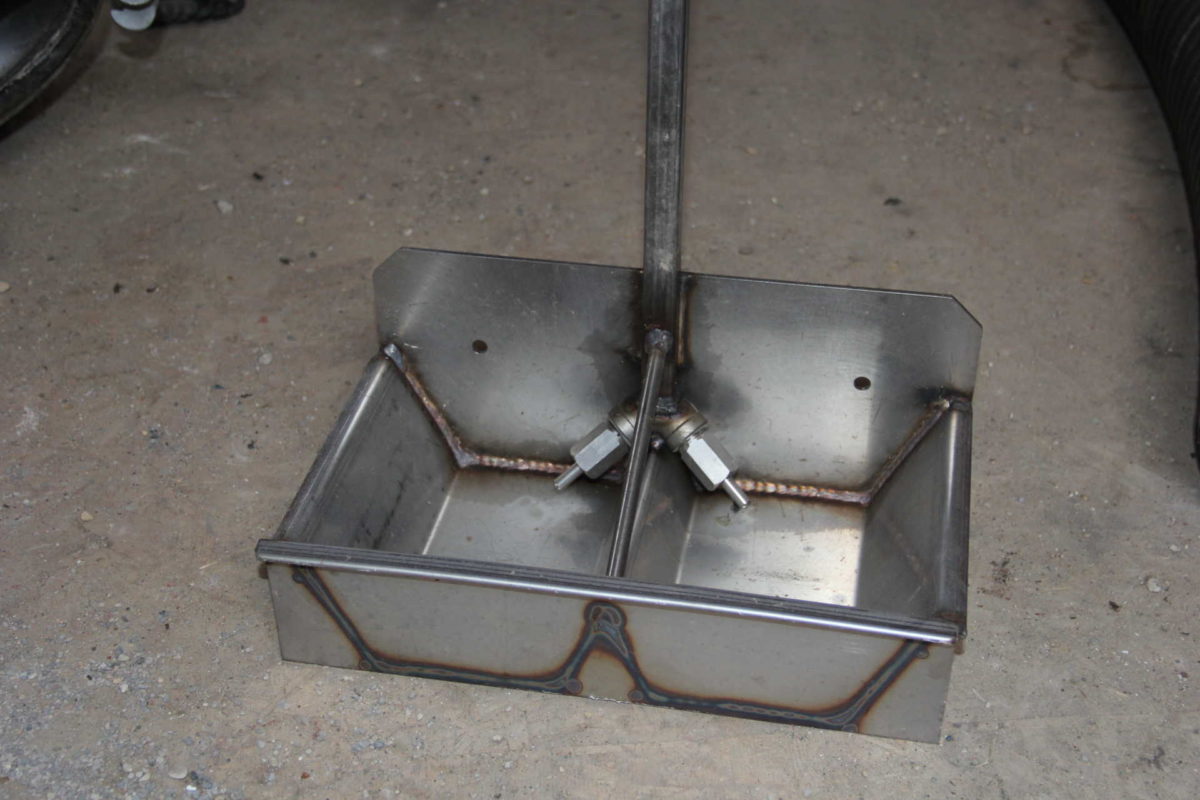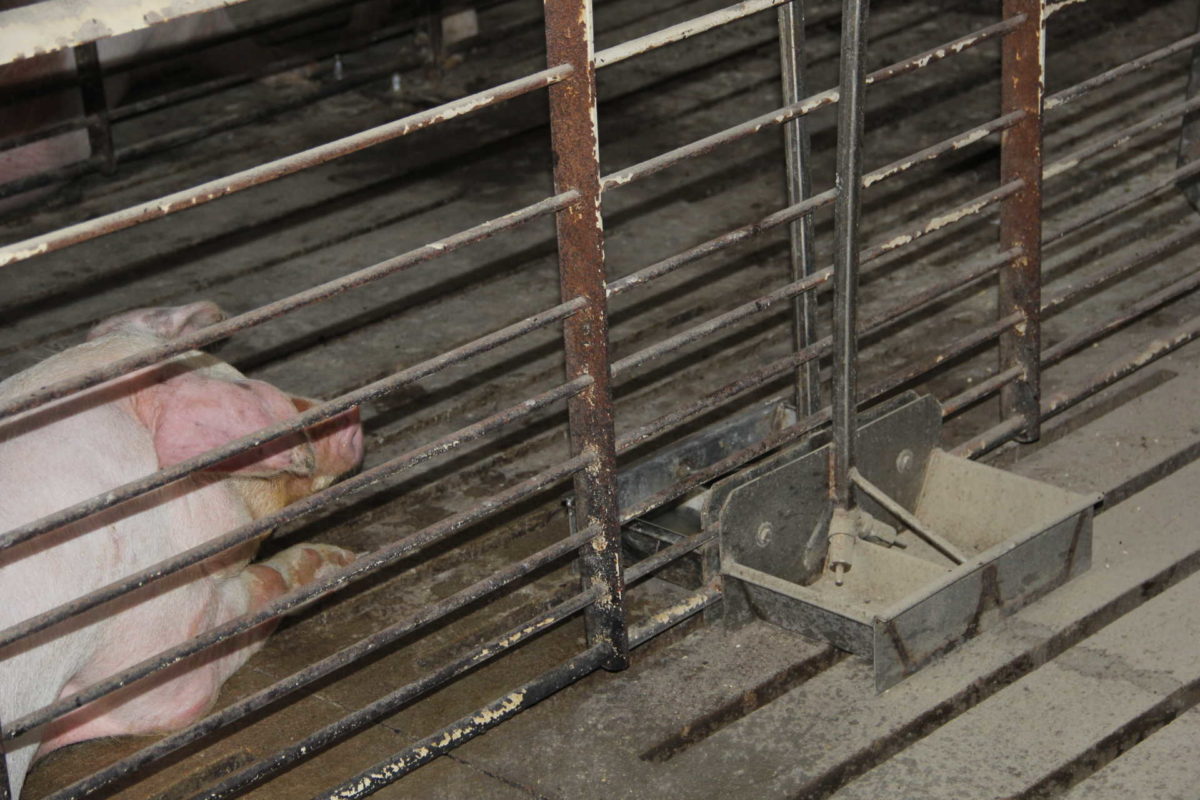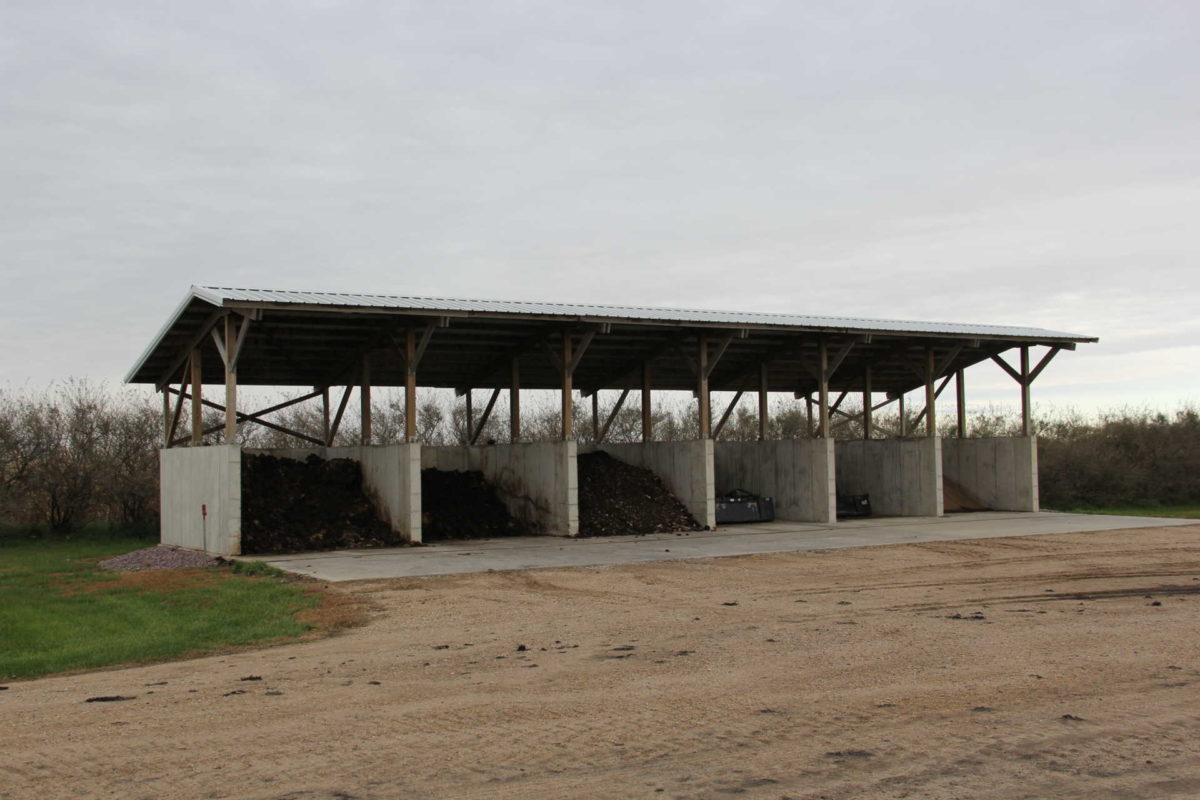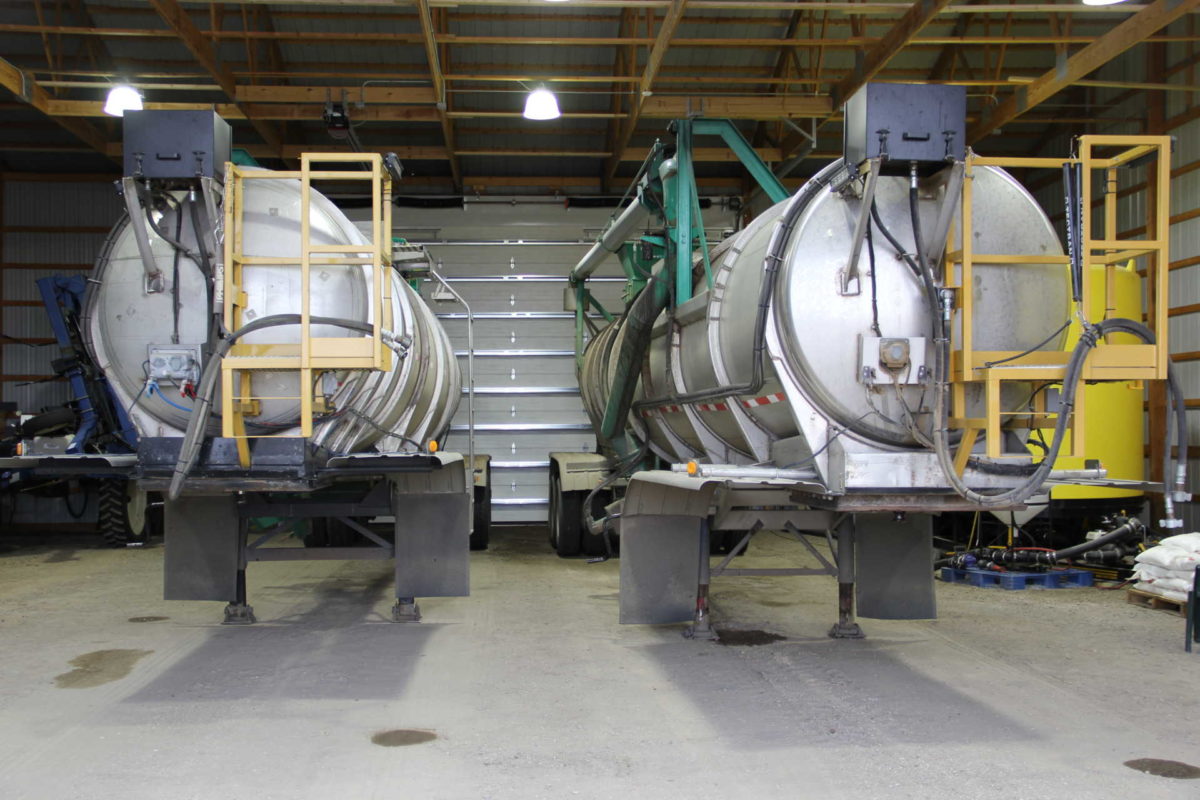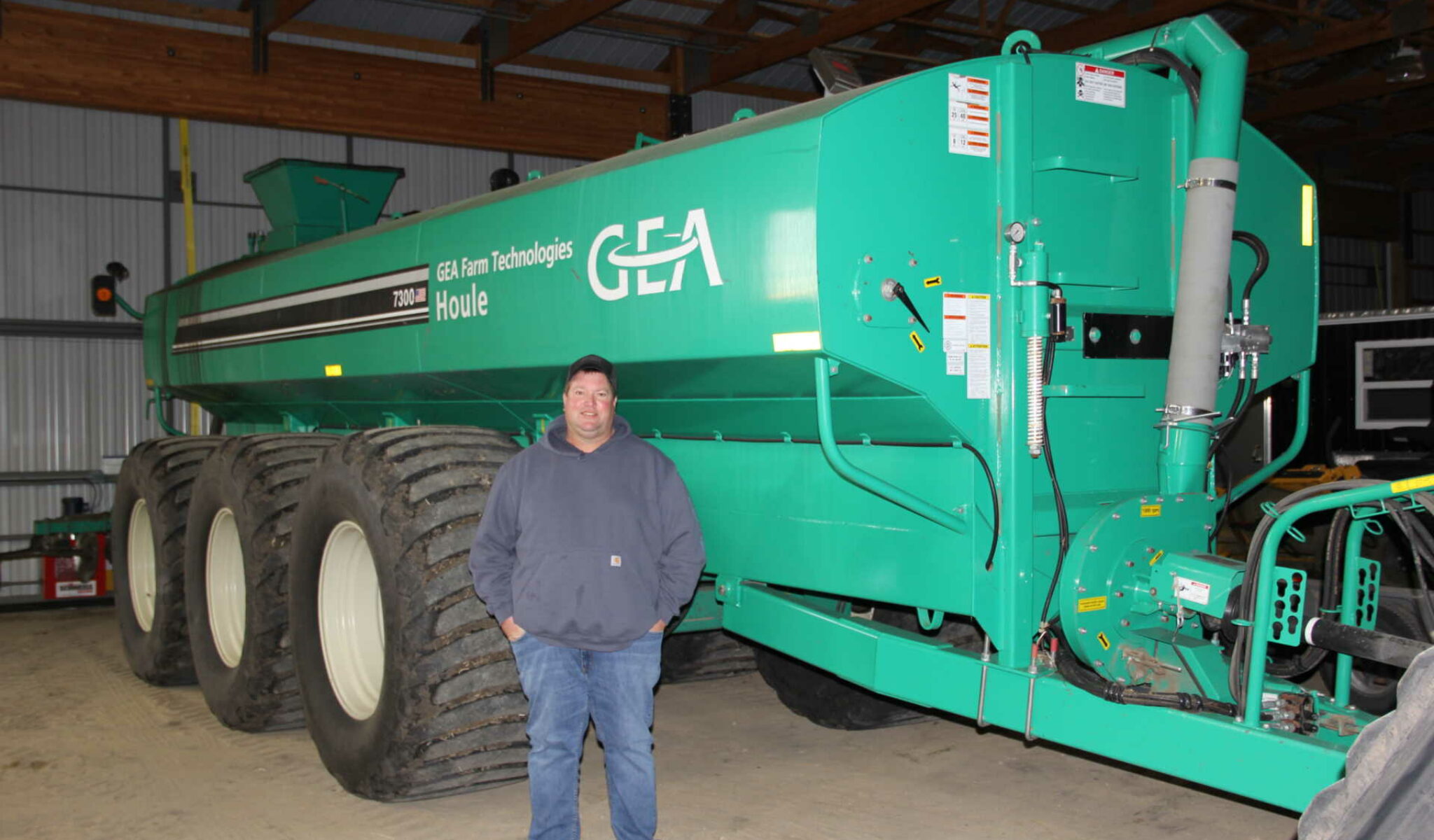
Source: MN Pork Board
The Minnesota Pork Board recognized CF Contract Partner Craig Holm of New Ulm, Minnesota, as this year’s Environmental Steward of the Year award recipient on January 27, 2020, at the Hilton Minneapolis.
Understanding your environmental footprint and keeping the environment front-of-mind is as equally important as taking care of the pigs in today’s pig farming landscape. Over the last few decades, pig farmers have monitored, tailored, and advanced their efforts to more sustainably produce a product to safeguard natural resources and preserve water, air, and soil quality. This year’s environmental steward award recipient, Craig Holm, embodies what it means to be an environmental steward through his willingness to step up and be a leader by integrating unconventional practices into his operation.
Holm grew up on a small farm on the outskirts of New Ulm with pigs and steers along with raising corn and soybeans. However, the lifestyle the pigs he grew up raising looked much different than how he raises his pigs today. Instead of being indoors, these pigs could be found out in the elements in open-front housing.
After a decade working with machines in a shop near New Ulm, and coming home to help with chores in the evening, the year 2001 brought about many changes for Holm. Being a short ten miles from Christensen Farms headquarters seemed to be a prime location to begin his own pig farming career, so he chose the building site, received his permits, and built three confinement barns.
Though often times changes from the norm can be looked down upon from older generations, Holm’s father was very supportive, yet sternly pointed out that once the barns were built, there was no turning back.
At the time, there were few modern barns in the area. He notes the first time his dad walked into the building he said, “This is how pigs should be raised. No question about it. It is so much easier on them being out of the cold, ice and snow, which Minnesota winters bring.”
During his first five years pig farming, Holm raised gilts. These early years brought about steadfast disease tracking and implementation of biosecurity practices.
“Awareness of biosecurity practices and having procedures in place became really important really quickly,” states Holm. “We were located close to the system headquarters, and because we had gilts, it was especially important to know how diseases traveled.”
Once an idea of how certain diseases spread materialized, specific biosecurity protocols were put into place immediately including showering-in and out, using disinfectants, staying on your own site, and not allowing others on your site.
Holm adds, “We had PRRS in one barn and kept it out of the other on the same site. This goes to show how effective biosecurity practices, when followed meticulously, really are.”
From his first year to present time, Holm points out the difference he has seen over the years in overall pig health and livability rates, which he appoints major credit to the biosecurity practices put into place.
Since those early years, Holm switched gears and now finishes pigs, where he continually seeks out new practices to help his business succeed while also keeping his environmental footprint at the forefront of his mind.
The implementation of water pans in his barns this past year has proven to be a successful investment on a multi-faceted front. In one regard, the pans have cut the farm’s water usage in half. A small pan restricts the pigs from getting playful with the water like they do with conventional nipple drinkers, and does not allow them to splash the water out with their feet and snout. Instead, the pigs are limited to simply dropping their heads and drinking.
Not only do the pans cut down on water usage, but they also assist in creating a much more dense manure product. Considering the splashing and dripping of water in typical systems seeps through the slotted floors and into the manure storage below the barn, water pans maintain the excess water within the pan.
“Our manure storage was getting too full too fast, so we knew we were wasting a lot of water,” says Holm. “With the water pans in play, we have much more valuable manure instead of tanks just filled with water.”
Manure is a valuable resource; by having a more concentrated product, less is needed to cover the same amount of acreage. This leads to a smaller opportunity for runoff, less odor in the air, and keeps unnecessary weight off the roads.
Holm states, “It’s all about being neighborly. We need to do what is best for our neighbors, our land, and our roads. Each and every day, we are preparing ourselves for the future.”
Another unique practice Holm integrated into his operation several years ago is composting. After trying other methods of disposal such as rendering and using an incinerator, his farm now takes advantage of a Natural Resources Conservation Service (NRCS) program to compost. The compost building, designed by the NRCS, consists of 5 bays; however, since the genesis of the project, only 3 bays have been utilized because the system works so efficiently.
In order for the system to work properly, a layering process of ground up trees, grass, turkey manure, and pigs is continually placed on top of one another. Once the first bay is full, the layering process begins all over again in the second, and so on. Once the materials in a bay have decomposed, it is reused in the layering process.
Multiple environmental benefits stem from this system. Apart from building the site, there are no other added costs, whereas rendering and incinerating services both incur costs on a monthly basis. By eliminating the need for a rendering truck to drive out to the site, the potential for spreading disease decreases. Composting also creates a neat and clean process while keeping smells down – both of which rendering and incinerating can pose problems with. Incineration also produces a lot of smoke – another environmental problem Holm was happy to bypass with composting.
In the five years Holm has utilized this method, he has not removed any materials from the three bays in use because of the highly efficient decomposition process.
Much of what makes Holm so deserving of the environmental steward award is his willingness to embrace change and try new things. He says, “We need to change with the times and be open to new ideas. We can’t be locked into doing things one way, or else we won’t survive in this business.”
With every pig and every acre, Holm strives to raise a better product in the most environmentally-sound way possible. Over the years, he has realized farming practices need to be done right in order to be successful. He notes the public’s concerns of over-fertilizing or giving unwarranted antibiotics is trivial and unrealistic; farmers do not waste their resources, time, or money on impractical endeavors.
“We need to make sure things are just as good as or better than when we took things over,” Holm says. “We’re always trying to improve and make things better, whether that be by using less fertilizer or coming up with ways to prevent runoff or reduce waste. We generally just need to do what is best for everyone and use our resources appropriately.”
One way Holm lives this out is through his ideology of performing tasks the right way on the first try. He believes in maintaining stability and slowing down when things get hectic to operate the farm safely and have every process run smoother for the long run. Not only does this philosophy create a safer environment for him and those he works with, but it also reduces the waste of resources and time.
Holm ends with this sentiment: “We are going to be using these barns, these soils, these farms, and these areas for a long time. We certainly don’t want to overproduce, overuse, or overapply. We don’t want to wreck our future.”


